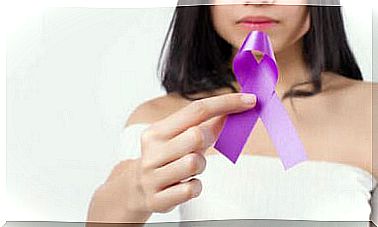How Do Colors Influence Our Perception?
The influence of colors on the behavior of each individual can occur consciously or unconsciously, but it is stronger than we think.

The best of our senses is certainly sight, because it is thanks to it that we perceive a myriad of images and objects. These objects reflect light differently, which is what our eyes perceive as colors.
Each person reacts in a particular way to colors. This reaction may reflect a particular emotional state, or our personality affinities towards that color, for example:
- A taste for food
- An unpleasant perception of certain images
- A reaction to the advertising media
The range of colors that the vast majority of people can distinguish are those found in the rainbow:
- Red
- Orange
- Yellow
- Green
- Blue
- Indigo
- Purple
Today in our article we have made a description of each color, as well as the influence or effects they have on people.
Red

It is the most striking color. It manifests impulses such as:
- Love
- Passion
- The heat
- Vitality
- Comfort
Likewise, it can also appeal to negative feelings:
- departure
- Anger
- Abandonment
- Violence
It is also linked to danger signs or bloody situations.
It causes effects on the human body such as:
- Increased heart pressure
- Increased appetite
- A feeling of warmth
Due to the explosion of perceptions it causes, this color persists in its popularity and continues to attract people.
Orange
It’s a warm color, but not as striking as red. Orange is associated with energetic or very dominant people.
This color suggests:
- The novelty
- Dreams
- The youth
- Adventure
- Imagination
- Positive energy
This color produces a feeling of hunger and thirst, making it a suitable tone for dining areas.
If you are in a closed room, it can cause insomnia.
Yellow
This very vivid color easily catches people’s attention, due to its warm, pleasant and uplifting brightness.
Among its meanings, we find:
- Immortality
- Arrogance
- The power
- Strength
- Dominatioon
- The wealth
In everyday life, it is used to represent warning signs such as:
- Quarantine, at sea
- A change in traffic
It is a color that evokes light and is associated with intelligence.
Used in small touches, and in a light tone, it is pleasant. However, if used in large spaces and with intense tone, it becomes itchy and causes eye strain.
Yellow speeds up metabolism and can produce frustration or anger if used intensely in a closed room.
Green
It is the color of nature, fields and forests par excellence.
It evokes:
- Spring
- Fertility
- The renewal
- The growth
If perceived positively, it is a symbol of:
- Luck
- Health
- Hope
- Reason
It is a color made up of blue and yellow, so it is considered an intermediary of emotions and judgment.
In times of stress, she talks about:
- The freshness
- Relief
- Calm
- Consolation
- Peacefulness
- Relaxation
- Rest
Green is awarded to outgoing, friendly and patient people who hate loneliness and seek companionship.
Blue

The color blue immediately brings up the mental image of the sky or the sea.
It is associated with several emotions and states such as:
- Trust
- Intelligence
- The peace
- Nobility
- Security
- The truth
- Wisdom
- Immortality
- Loyalty
Blue is classified among the cool colors, suggesting an image of ice or iron, depending on the intensity of the tone.
It motivates rest, tranquility and spiritual research. Blue does not cause eye strain, which is why it can be used in large areas.
It has a relaxing effect which produces serenity and tranquility. It can lower the body temperature and even the pulse. Likewise, it can also generate sadness.
Indigo
Indigo is very powerful for the mind, as it stimulates the imagination and intuition, deepens feelings and obscures thought.
It can be dangerous for people who are depressed, and also has sedative effects.
It represents beauty, mystery and wisdom.
In Asian countries, such as India, China and Japan, it is widely used, especially in the textile or paper industry.
Purple
It is the symbol of humility and penance.
It is associated with reflective people, and evokes:
- Loneliness
- Pain
- The sacrifice
- Mysticism
It is a mixed color, made up of red and blue, and has very contradictory meanings.
It represents a mixture of masculine and feminine, and can evoke relaxation, spiritual strength and sensitivity in people of an irritable nature.
When it comes to a stronger purple tone, it is associated with self-centered and materialistic people.
On the other hand, we also have black and white which are not considered colors. The first is the sum of all colors and the second is the complete absence of them. However, black and white also has an impact on people.
White
It is known to be used by calm and understanding people. White helps fight feelings of disappointment or confinement.
It symbolizes:
- The purity
- Innocence
- Chastity
- The cleanliness
- Virtue
As it is an illuminating tone, it creates the feeling of cleanliness and amplitude in the space, but it can also give an impression of hostility.
Black
Black, on the other hand, absorbs all light. We therefore associate it with:
- The death
- Darkness
- The destruction
- Mourning
- The mystery
- Elegance
It is the opposite of white, it can symbolize:
- The evil
- The penalty
- Unhappiness
- Formality
- Sophistication
- The power
All negative feelings are usually associated with black. In fact, when combined with other colors, black reverses any positive aspect.
For this reason, it is associated with introverted people, although it also evokes elegance, domination, individualism, protest or rebellion.









